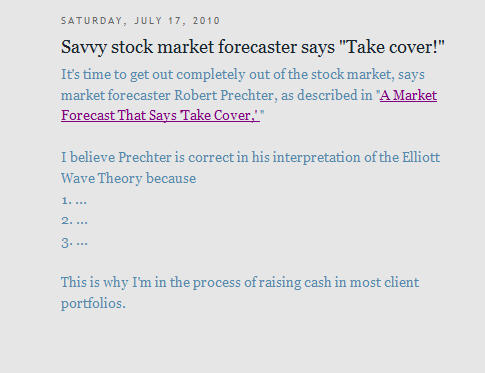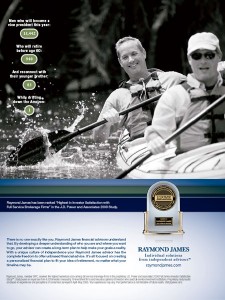
Photo by Steffe
Registered representatives and registered investment advisors (RIAs) fall under two different regulators when they blog. Reps must grapple with FINRA’s regulations, while RIAs enjoy more freedom under the Securities and Exchange Commission (SEC), as I learned from Bill Winterberg’s guest post in December 2008. Do things right because “You can be sure that FINRA is going to start including social media reviews in their next round of examinations,” as attorney Mark Astarita said in “Advisors Allowed To Get Social.” That goes for the SEC, too.
However, if you treat your blog posts as sales literature or advertising, you’re unlikely to run into problems with your compliance department. This is true whether you’re a rep or an RIA. This has implications for your content, administrative processes, and recordkeeping.
You’ll find some guidelines below. Don’t rely solely on this blog post for guidance because I only skim the surface. Always check first with your compliance officer. If you’re the compliance officer, it’s important to monitor compliance developments for more details–and because standards may change quickly. You’ll find compliance resources at the bottom of this blog post.
Content: No recommendations
“The bottom line here is do not make specific recommendations in any of your communications. You should keep your comments, posts, and interactions general in nature if you are referring to anything that is financially related,” says Stephanie Sammons, CEO of Wired Advisor, in “The Good News/Bad News of FINRA’s Social Media Guidelines Release.”
If you’re regulated by the SEC, you should observe the following policies when writing content, as summed up by Triplestop LLC’s Joe Polidoro in “Social Networking for RIA’s.”
- Disclose all material facts
- Don’t publish testimonials–When you wander off your blog, this includes LinkedIn recommendations, Twitter favorites, and the Facebook “like”
- Don’t use “RIA” improperly
Polidoro also stresses that, aside from crafting your content carefully, you monitor your sites frequently so you can remove testimonials and other noncompliant content, keep records (see more details below), and develop and post your social media policy.
Some SEC compliance tips I picked up include during my dealings with compliance professionals include
- Never make guarantees
- Use “we believe” to make statements more palatable to your compliance officer
- Avoid mentioning specific products, especially specific mutual funds, whenever possible, or you subject yourself to onerous disclosure requirements
Process: Preapproval preferred
Reps must get their blog content approved by a registered principal before they post to the web, according to Polidoro’s How FINRA Regulations Play Out in Social Media, At a Glance. RIAs have more leeway, especially if they’re at a small firm. I believe that larger RIA firms are likely to demand preapproval.
Recordkeeping: Archive your posts so they’re easily retrieved
FINRA wants you to keep your records for at least three years; the SEC, for at least five years. There are plenty of vendors that would like to provide you with an automated solution for tracking your social media. You’ll find some of them in the list of “Twitter and other resources.”
Reports, articles, and regulations on social media compliance
Here are resources that complement the blog posts I’ve mentioned above. If you’re aware of more, please let me know.
Twitter and other resources on social media compliance
Most of the people named below don’t focus on social media compliance. But they have put out useful information in the past. I expect they’ll do so again. Thanks to Bill Winterberg for adding some names to this list. Check Bill’s compliance list on Twitter in case new resources emerge.
This list gives Twitter names first. You can recognize Twitter names because they start with the @ sign. They’re followed by blog or website links. If the resource lacks a Twitter name, I give their real life name.
Do you recommend other resources on social media compliance for financial advisors? Please add them in the comments. I’m especially interested in resources for investment managers, wealth managers, and financial planners who blog.
April 2016 update: For a more recent post, read “Top 3 Compliance Concerns When Writing Your Blog.” In April 2016 correspondence, Cindi Hill confirmed that her advice is still current.









